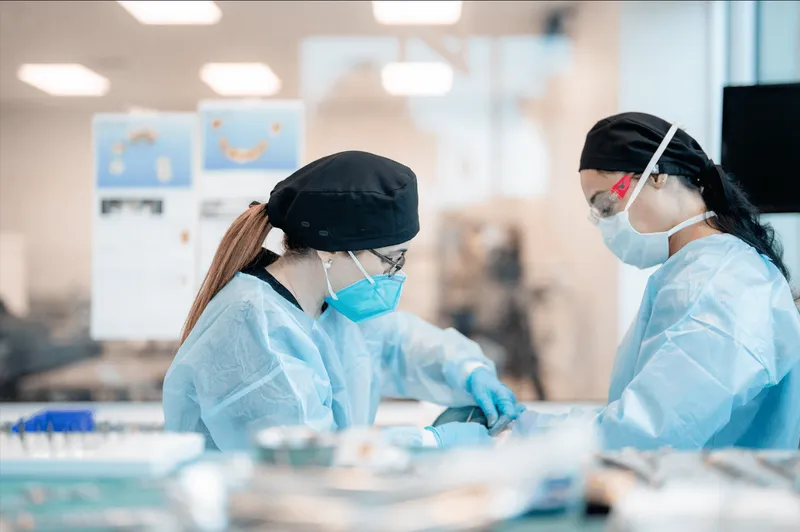Redo Full‑Arch Implants: Why 20–30% Are Re‑Dos — and How to Avoid One

Contents
Quick Take
Experts estimate 20–30% of the full‑arch implant cases they see are re‑dos of prior work. Common causes: freehand surgery that didn’t match the prosthetic plan, poor implant distribution, and under-resourced teams trying to do too much.
“In my Oklahoma office, 20–30% of the full‑arch cases were re‑dos.” — Dr. Perry Brooks
“The biggest mistake people make is the front‑to‑back spread… You can overwhelm an implant if you don’t get the right distribution.” — Dr. Perry Brooks
What Counts as a 'Redo'?
Redo cases range from minor bite adjustments to full removal and replacement of implants. Common signs:
- Bridge won’t seat because implant angles are off.
- Fractured materials from overload or bad spread.
- Sore spots from pressure on soft tissue.
- Loose screws or frequent chipping
- Infections due to implants placed too close together or near thin bone.
Related Reading: Learn more about all of your dental options with our guide to full arch dental options , or explore why implant prices vary so much
Common Causes—and How to Spot Them
-
1) Freehand surgery with no clear plan
Ask: “Will my case be planned digitally with the prosthodontist and lab?”
“Are you using guides or robotic navigation?”
“Can I see where the bridge will sit and how it’s supported”
-
2) Poor front‑to‑back spread
Ask for a plan that shows proper implant spacing and minimal cantilever.
-
3) Too few hands in the room
Ask: “Who’s in the room for surgery?” Avoid setups where one person does everything.
-
4) No on‑site technician
Ask: “Will records be captured with photogrammetry?”
“Is a technician involved during surgery?”
-
5) Rushed or risky aftercare
Ask: “How will medical issues like smoking or diabetes affect healing?”
“What’s the plan during the 4–6 week weak point?”
Who Should Consider a Second Opinion?
- Your temporary never felt right.
- You keep breaking bridge teeth
- Speech is still off.
- You haven’t seen a digital plan or been told, “This is the best we can do.”
What a Redo Evaluation Includes
-
1) Records audit: CBCT, photos, scans, surgical notes
We review all your previous treatment records to understand what was done and identify potential issues.
-
2) Biomechanics check: Implant locations, spread, screw paths
We analyze how your implants are positioned and whether they can properly support your teeth.
-
3) Tissue health: Cement, plaque, or overbulk issues
We check for any problems with your gums and surrounding tissues that might be causing discomfort.
-
4) Bite and speech evaluation
We test how well you can chew and speak with your current teeth to identify functional problems.
-
5) Treatment options: From adjustments to staged surgeries
We explain all available options, from simple fixes to complete replacement, based on your specific situation.
-
6) Expectation reset: Clear talk on goals, timing, and costs
We have an honest conversation about what's possible, how long it will take, and what it will cost.
Benefits & Risks of Redo Care
Benefits
- Restores comfort and function
- Easier to clean and maintain
- Fewer repairs after proper load distribution
Risks
- May need more surgery and time
- Temporary diet restrictions
- Sometimes the ideal result isn't possible—but we aim for the best outcome for your health
Costs & Financing
Redo care may be minor or major, from a new bridge to full replacement. We offer transparent pricing and flexible monthly plans.
Next Steps
Worried your implants may need a redo—or want to get it right the first time?
📞 Call +1 (737) 227-3037 or book your free consultation here
Smileloc's Prevention Playbook
- Team-based planning with surgeon, prosthodontist, and technician
- Guided or robotic implant placement for precision
- Separate anesthesiologist to free up the surgeon
- Photogrammetry for precise surgical records
- Follow-up focused on healing's weak point (weeks 4–6)